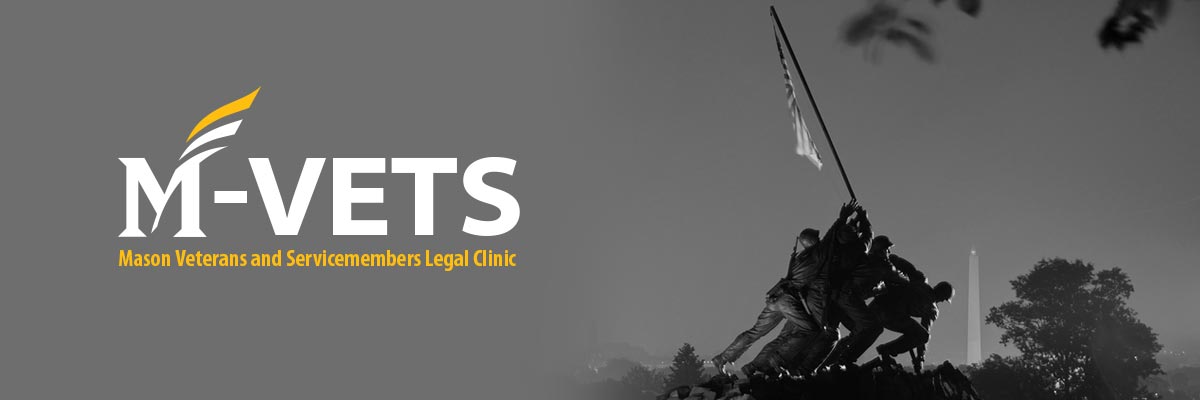Written By Summer 2022 M-VETS Student Advisor Greg Pelletier.
Approximately 3.6 million people in the United States currently have a security clearance.[1] Many of these individuals with security clearances are active-duty service members in the military. Other clearance holders include civilians with national security related jobs or defense contractors. As these active-duty service members transition from the military into civilian jobs, many of them wonder if their security clearances will transition with them.
What Are Security Clearances and Why Are They Required?
Security clearances are the federal government’s method of safeguarding sensitive national security information.[2] The concept of security clearances was first initiated in 1979 by Department of Defense (DoD) regulations and the creation of the Personnel Security Program.[3] Since then, the DoD and federal government has amended the program through additional regulations and executive orders.[4] Pursuant to Executive Order 12968, “the national interest requires that certain information be maintained in confidence through a system of classification” because “the unauthorized disclosure of information classified in the national interest can cause irreparable damage to the national security and loss of human life.”[5] The current security clearance program stresses uniformity, efficiency, and cost-effectiveness.[6]
Not all federal government jobs or military positions require security clearances, but the greater an individual’s superiority or rank, the greater the need to access classified information. Accordingly, it is very common for active-duty military members to have security clearances when they separate from the military and transition into the civilian workforce.
Types of Security Clearance
There are three types, or levels, of security clearance.[7] Ranked in order from lowest to highest, the clearance levels are “Confidential,” “Secret,” and “Top Secret.”[8] Each clearance level allows the clearance holder in a specific position to access a different level of sensitive national security information. Various executive agencies including the Department of State, the DoD, and the Department of Homeland Security have the ability to issue security clearances.[9]
Why Do Security Clearances Matter in the Civilian Workforce?
The most common security clearance jobs for military veterans transitioning to the civilian workforce are in the defense contracting industry.[10] Major defense contracting companies, such as Northrup Grumman, focus on recruiting post-military employees.[11] Veterans make up twenty percent of Northrup Grumman’s workforce, and many of these positions require a security clearance.[12] In fact, nearly 85% of all personnel security investigations for security clearances are conducted on DoD employees and contractors.[13]
As the defense industry expands, these veteran-filled security clearance jobs will also expand. The DoD reported that its contracts and investments with defense contracting firms increased by $43 billion in 2020.[14] In Virginia alone, the DoD spent $64.3 billion in defense contracts.[15] The DoD’s massive investment in defense contracting has spiked the demand for security-clearance employees, and if the trend continues, many of these employees will be veterans.
Can I Keep my Security Clearance After Separating from the Military?
Security clearance reciprocity between jobs and employers is possible but not always practical. Security clearances are provided to individuals, but the clearances are also attached to specific positions based on specific duties and responsibilities.[16] Federal agencies will ordinarily transition a security clearance between agencies so long as the individual’s last security clearance investigation occurred within the past five years for a Top-Secret clearance and ten years for a Secret clearance.[17] Agencies also take into account other factors such as serious life changes and job differences.[18] Overall, this means that security clearance reciprocity is possible, primarily for veterans transitioning into civilian jobs posted by other federal agencies.
Transitioning a security clearance to a private civilian job is more complicated. Private jobs entail significantly different duties, responsibilities, and access to sensitive information. This means that private companies must often sponsor their new employees during further background investigations and security clearance screenings. The optimal strategy for transitioning a security clearance from the military to a private civilian job is to renew your clearance and keep it as up to date as possible prior to military separation. The Department of State notes that it takes an average of 120 days to obtain a security clearance.[19] A longer timeline also involves more costs as the applicant must wait for a decision before finalizing their employment. Having an up-to-date and renewed clearance at the time of military separation can expedite further background investigations if they are necessary.
Conclusion
Defense contracting and jobs requiring security-clearances are expanding, and veterans who already possess security clearances have an advantage over other applicants seeking these same jobs. The security clearance application and screening process can be long and costly. As a result, this process can pose a significant roadblock for recently separated veterans looking to quickly transition to the civilian workforce. If a veteran finds themselves in this situation, they should focus on renewing and keeping their security clearance up to date. Security clearance reciprocity is not always practical depending on the individual and the position they are seeking. The security clearance process may be challenging to navigate, but service members or veterans already in possession of a clearance have a unique advantage when transitioning into and competing for defense contracting or civilian jobs.
[1] Vergun, Department of Defense, “All DOD Personnel Now Receiving Continuous Security Vetting” (Oct. 5, 2021).
[2] U.S. Department of State, Bureau of Diplomatic Security, “Security Clearances.”
[3] U.S. Department of Defense, Regulation 5200.2-R (Dec. 1979).
[4] Clearance Jobs, “The Brief History of the Security Clearance Process” (2022).
[5] Executive Order 12968, F. Reg. 60, 151 (Aug. 7, 1995).
[6] Id.
[7] U.S. Department of State, Bureau of Diplomatic Security, “Security Clearances.”
[8] Id.
[9] Id.
[10] Kness, Clearance Jobs, “Veteran Employment in the Defense Contracting Sector” (Nov. 11, 2021).
[11] Id.
[12] Id.
[13] Clearance Jobs, “The Brief History of the Security Clearance Process” (2022).
[14] U.S. Department of Defense, Defense Spending Report by State 2020 (Oct. 22, 2021).
[15] Id.
[16] U.S. Department of State, Bureau of Diplomatic Security, “Security Clearance FAQs.”
[17] Id.
[18] Id.
[19] Id.
